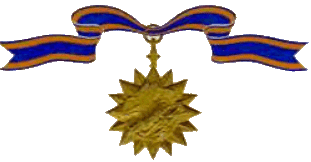The Air Medal
 The Air Medal (AM) is a military decoration of the United States Armed Forces. It was created in 1942 and is awarded for single acts of heroism or meritorious achievement while participating in aerial flight.
Criteria:
The Air Medal was established by Executive Order 9158, signed by Franklin D. Roosevelt on May 11, 1942. It was awarded retroactive to September 8, 1939, to anyone who distinguishes himself by meritorious achievement while serving with the Armed Forces in aerial flight.
The original award criteria set by an Army Policy Letter dated September 25, 1942, were for one award of the Air Medal: per each naval vessel or three enemy aircraft in flight confirmed destroyed. An entire aircrew would be credited for the destruction of a ship, but only the pilot or gunner responsible would be credited for destroying an enemy aircraft, per 25 operational flights during which exposure to enemy fire is expected, per 100 operational flights during which exposure to enemy fire is not expected. These criteria were altered by the commanding generals of each numbered Air Force to fit the conditions of their theater of operations and to maintain morale. The Distinguished Flying Cross would usually be awarded for roughly twice to five times the requirements of the Air Medal. This led to automatic "score card" awards of the Air Medal and Distinguished Flying Cross for completing a set number of operational missions rather than distinguished service, meritorious action, or bravery, as had been intended. On August 5, 1943, such score card awards were officially abolished by a Headquarters Army Air Forces Awards Board memorandum due to the embarrassment when airmen received the Air Medal for "score carding" five missions or more but were later removed from flying duties for "lack of moral fibre". Commanders could still issue the awards on those grounds, but the recipient must perform exceptional or meritorious service as well.
Wikipedia
|